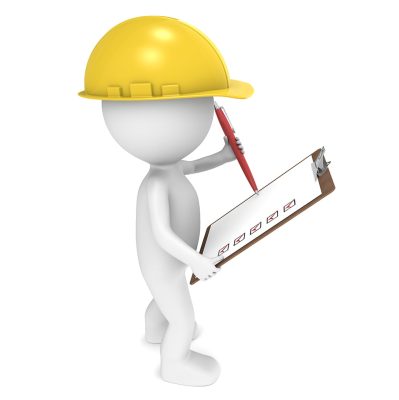After successfully placing an offer on a residence and having it accepted, the next step in the purchasing journey is the escrow period leading up to the property inspection. Achieving a smooth and successful inspection is made easier by leveraging a comprehensive home inspection checklist. Employing such a checklist streamlines the process, paving the way to secure your ideal residence.
Acquiring a home, especially for first-time buyers, is a momentous decision marked by a spectrum of emotions. The elation of owning your own space, the apprehension of the financial commitment, and the exhaustion from the meticulous search process with a real estate agent are all par for the course.
It’s essential to understand that these fluctuating emotions are typical. With the most challenging stages behind you, the only major steps remaining are the inspection and the final walkthrough. Recognizing the potential complexities of the inspection phase, we’ve formulated an exhaustive home inspection checklist. This tool aims to alleviate concerns and guide you seamlessly into your new residence, rendering generic first-time buyer guides almost redundant.
Table of Contents
Home Inspections
A home inspection is a rigorous assessment of a recently acquired property, spotlighting any prospective issues. This evaluation is generally executed by a seasoned inspector who subsequently furnishes a detailed report on the property’s condition. The principal objective of this inspection is to identify and document any areas of concern prior to concluding the closing process. This preemptive measure affords both the buyer and seller an opportunity to recalibrate terms or, in extreme cases, reconsider the transaction.
Although it might seem daunting, a home inspection is, in reality, a pivotal protective measure for prospective homeowners. In numerous instances, inspections yield no unexpected findings. However, on the rare occasion that they do, it facilitates a dialogue between the buyer and seller regarding potential remedies. Any rectifications can be reassessed during the final walkthrough. It’s imperative to commission a home inspection, even if one is confident about the property’s condition. Such a precautionary step can shield buyers from unforeseen complications and financial pitfalls in the future.
Comprehensive Home Inspection Checklist
When engaging with a qualified inspector, they are expected to be proficient in identifying key areas of inspection. Nonetheless, it’s invaluable for property investors to be conversant with vital components of the inspection process. A deeper understanding of this process empowers investors to independently evaluate potential properties more efficiently. In light of this, there are six pivotal areas to be emphasized in a home inspection guideline:
Foundation: Undertake a thorough assessment of the property’s foundation to ascertain any potential future issues.
- Structural Integrity: Scrutinize the home’s structural robustness, as it is instrumental in influencing multiple subsequent considerations.
- Exterior Elements: Diligently survey the property’s exterior, ensuring every detail, from the rooftop to the landscaping, is meticulously examined.
- Interior Evaluation: Navigate through the residence, adopting a discerning perspective towards every aspect observed.
- Plumbing & HVAC Systems: Prioritize the examination of the property’s plumbing and HVAC installations, given their significance and associated investment value.
- Electrical Framework: While inherently more challenging to evaluate than other elements, it’s indispensable to glean insights into the functionality and condition of the property’s electrical network.
Extensive Home Inspection Comprehensive Checklist
Structural Elements
- Roof and attic framing
- Basement assessment
- Ceiling examination
- Wall inspections
- Evaluation of underfloor crawl spaces
- Assessment of foundation anchoring, especially in earthquake-prone regions
- Foundation assessment
Roofing Elements
- Drainage systems, including gutters and downspouts
- Examination of roof penetrations (e.g., vents, skylights, chimneys)
- Assessment of roof flashing
- Evaluation of shingles and tiles
Exterior Components
- Walkway inspections
- Driveway analysis
- Deck and balcony evaluations
- Wall coverings and trim
- Examination of porches, patios, and associated railings
- Vegetation considerations around the property
- Site drainage review
- Presence of safety measures around pools
- Evaluation of doors, steps, and eaves
- Grading and fascias
- Balcony integrity
Interior Aspects
- Ceilings, floors, walls, and window assessments
- Inspection of permanently installed appliances
- Analysis of cabinets and counters
- Evaluation of stairways and railings
- Assessment of garage doors and their openers
Plumbing Components
- Review of faucets, drains, and fixtures
- Inspection of water heaters
- Analysis of sewage pumps and sump pumps
- Examination of vents, flues, and exhaust pipes
- Evaluation of fuel storage systems
Electrical Systems
- Evaluation of main and sub-service panels
- Examination of light switches, fixtures, and receptacles
- Assessment of overcurrent protection measures
- Analysis of the service drop and entrance components
- Review of smoke and carbon monoxide detectors
Heating, Ventilation, and Cooling (HVAC)
- Assessment of heating systems, including furnaces and heaters
- Inspection of visible insulation and vapor barriers
- Review of cooling components such as condensers and fans
- Examination of distribution systems and exhaust systems
- Evaluation of condensate drainage processes
Guidance for Homebuyers Undertaking Inspections
For individuals in the process of acquiring a property, the following guidelines will ensure a comprehensive home inspection:
Scope of the Inspection
Recognize the limitations of a standard home inspection. Inspectors may not identify every potential issue due to safety or accessibility constraints. Familiarize yourself with the inspector’s contract beforehand to understand which areas will not be covered.
Engage Specialty Inspections
Home inspectors primarily offer generalized assessments. For homes with particular challenges, a specialized inspection might be more pertinent. For instance, older properties could benefit from an electrical safety inspection, while those with health concerns might consider mold detection evaluations.
Dedicate Time for the Inspection
A detailed inspection can span multiple hours. Allocate this duration in your schedule and accompany the inspector. This offers an opportunity to perceive the property from the inspector’s vantage point and address any queries in real-time.
Peruse the Inspection Report
Even if you were present during the inspection, thoroughly review the report for comprehensive insights. Should there be areas of ambiguity, engage the inspector for clarity.
Consider Pricing Adjustments
In situations where you prefer not to engage with repairs or if you’re aiming for a rapid sale, it might be viable to reduce the property’s listing price or offer potential buyers a credit to manage the identified concerns.
Get the Taggart Advantage Today!
Greetings from Taggart Inspections! My name is Justin (JD) Taggart. With a rich blend of licensing and hands-on experience, I am your trusted companion in the journey of safeguarding your home. I’m not just an inspector; I’m your partner in ensuring that you’re making a sound investment.
From scrutinizing every nook and cranny in standard home inspections to specialized services like termite inspections, water quality assessments, and even energy evaluations, I’ve got you covered. Concerned about mold or asbestos? Let’s eliminate those worries. Unsure about radon levels? I’m here to provide clarity.
Your home is not just a structure; it’s an investment, a sanctuary, a memory. Protect it. Understand it. Get the complete picture.
So, are you ready to make an informed decision about your property? Don’t leave room for post-purchase regrets. Reach out today and let’s ensure you have all the knowledge at your fingertips.



